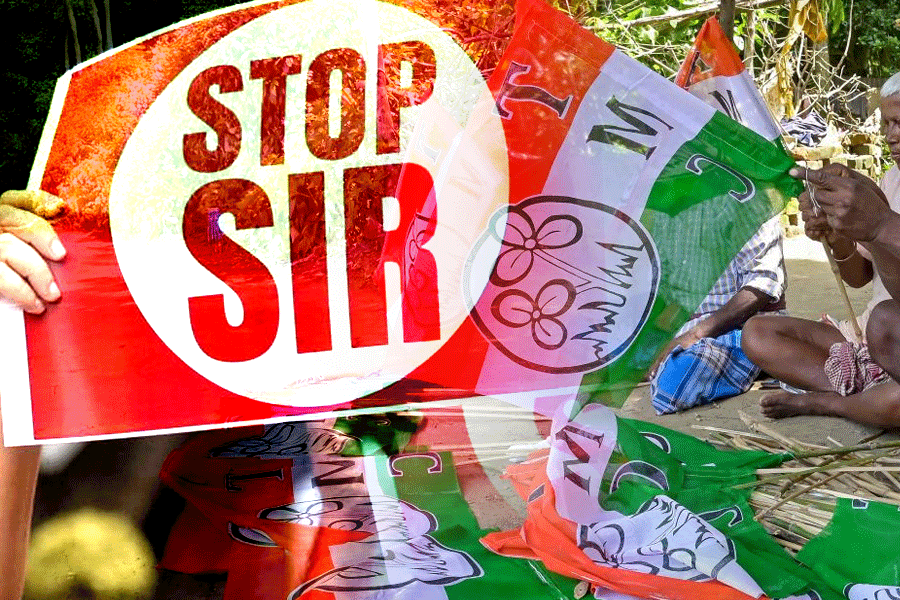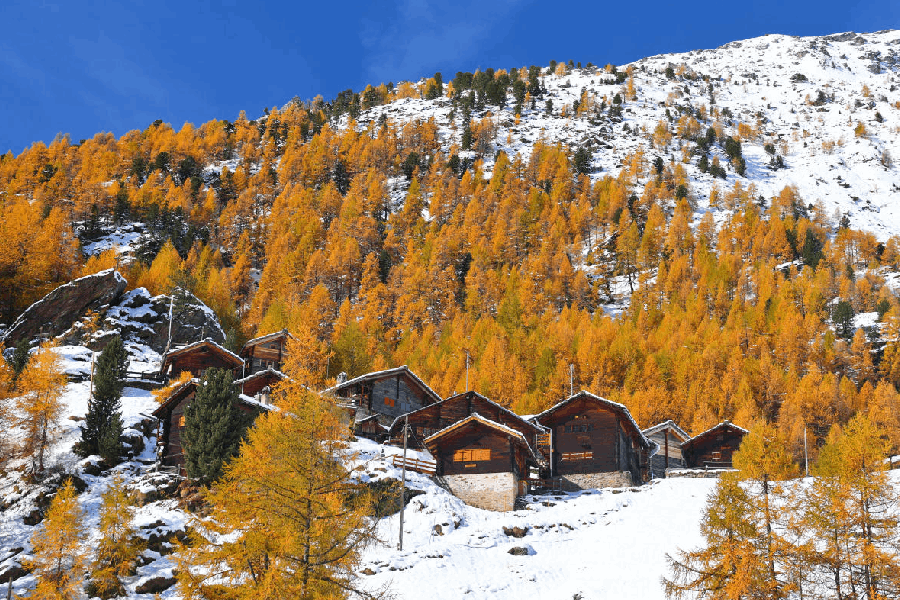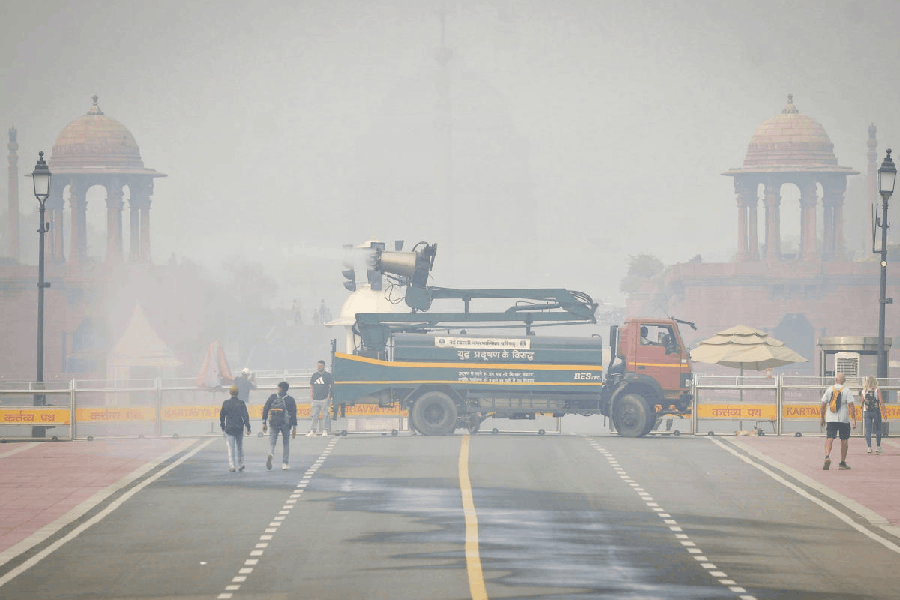 |
 |
| Biswas Bari at Cossipore and (top) a beauty on the ceiling. Pictures by Sanat Kumar Sinha |
Soon after one crosses the Cossipore lockgate and moves deeper north, the buildings look as if they find it increasingly difficult to shoulder the burden of their years.
Many of these are low-rise residences with pretentious gateways, miniature versions of columns and an embarrassment of ornamentation, and were in all probability constructed at the turn of the 20th century or even later by people who were new-rich then, whose wealth had by the end of that century spread too thin after going through the shredder of joint families.
Many of these buildings have made way for apartment blocks, whose angular structures and glossy new paint stand out against the dusty grey of this area dominated by disused mills and abandoned railway quarters.
In some neighbourhoods, like the one near Kutighat Road, the only relics of old mansions are their impressive gateways blooming with acanthus.
Close to it is Baranagar Victoria School, established in 1866, and a row of small temples dedicated to Jogneswar.
This neighbourhood, as its name indicates, is close to the Hooghly and opposite it is Belur Math.
Munshibari, which according to Baranagar: Itihas O Samikshya written by Anup Motilal and Ranjankumar Bandopadhyay, had its origins in the days of Warren Hastings, although it was actually constructed in 1855, has been turned into an old people’s home run by Peerless. Its red portal is all that remains of it.
Another crumbling building close to it Dutch Kuti on BK Maitra Road. On a marble plaque at the entrance are inscribed the words: “This house was the residence of Dutch Governor when Baranagar was under Dutch possession.”
Baranagar was once under Dutch rule so it is not unlikely that a Dutch kuti once stood there. Although the rear portion of the house is in ruins and has turned into a jungle of banyan trees, the section of the building facing the main road looks pretty lived-in with its birdcage at one side of the courtyard and the dish antenna.
A man who introduced himself as Bhabananda Dawn said the original building was bought in 1927 by his grandfather, Haridhan Dawn, who rebuilt it.
He and his four brothers have inherited the property from their uncle, the late Matilal Dawn.
The famous sari shop Jawaharlal Pannalal belongs to them. On its left side is Victoria School. The louvres are fitted with coloured glass and it has some delicate lattice work. It is said that once there used to be a subterranean tunnel leading to the river here. No trace of it any longer.
Dawn said the “party” and promoters had been after his life to give up his house, but he has resisted so far, and would continue doing so.
Ratan Babu Road yielded a curious if ugly building, which nonetheless looked strange enough — like a “grain silo”, a friend said. The gateway was a heavily ornamented semi-circular arch, that looked like half a bangle that Indian women wear.
The building was four storeys high and the parapet was lined with fleur-de-lis of chunam and sand, interspersed with ornamented pots on low platforms.
On closer look one detected architectural features and ornamentation appropriated from Buddhist chaityas. The porch had bulbous columns, one would associate with the Ellora caves, but out of context they looked hideous.
But at the same time such a building was definitely one of its kind, and although still sturdy, was not in the pink of health.
On its right was a tall, straight structure, higher than the original building. It was obviously added later — in 1955 — as were the two top floors.
In the yard in front was a Shiva temple and a thakurdalan where Durga puja is held. A middle-aged woman, who said she was a daughter of the family, said the building was once known as Narail House, after the zamindars of Bangladesh.
But now it was better known as Biswas Bari or house. Her cousin, Kaustab Biswas, said the house was about 80 years old. We were speaking inside a hall which was embellished Ajanata-Ellora style with lotus motifs and divine beauties looking down from the ceiling. The floor was marble with ochre borders. Masons from Lucknow had come down to build it.
Biswas took me to the rear where the kitchen-cum-outhouse stood, connected to the main building with a bridge.
His mother, Krishna Biswas, 81, said the house originally belonged to her uncle, Biswanath Roy of Narial. Her brother-in-law, Nakul Biswas, had bought it in 1950. The Biswases were once big timber merchants with a stone quarry in Chandil in Signhbhum. The road on which this 33-cottah house stands was named after her great grandfather, Ramratan Roy.
Whenever the Narail zamindar would go back home, the INA turned it into a camp. In those days the doors had ivory knobs and the staircase was carpeted. In 1971, when the entire Baranagar area was overrun by Naxalites, the Biswases had to abandon the house for some time. It was set on fire and the house was partially damaged.










